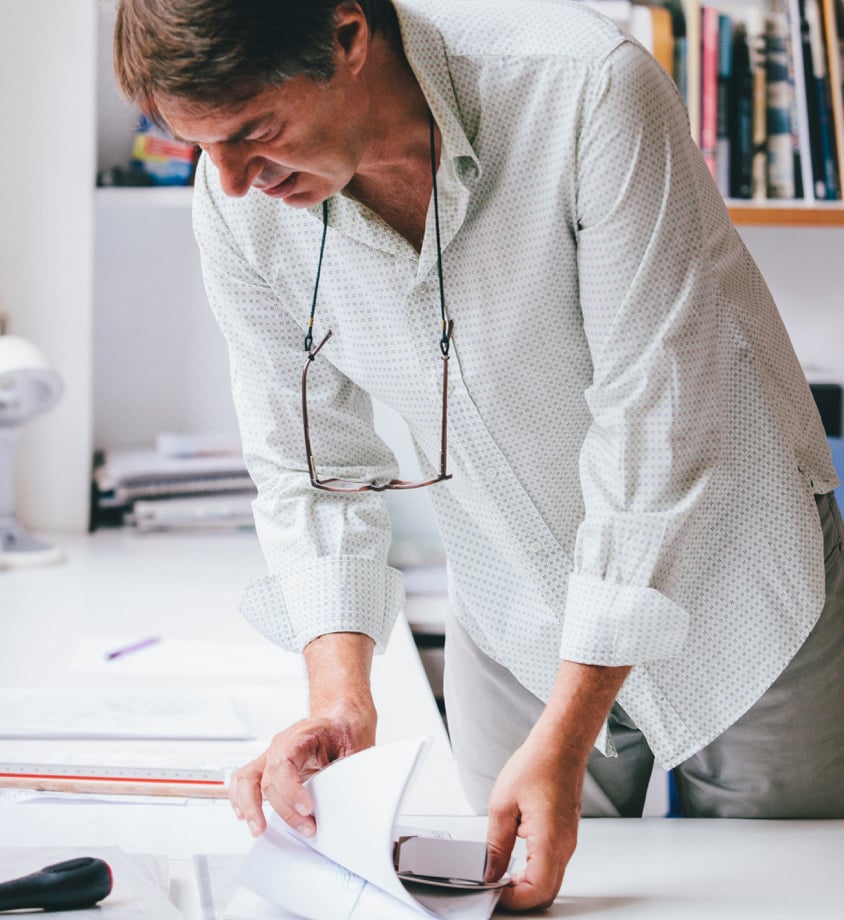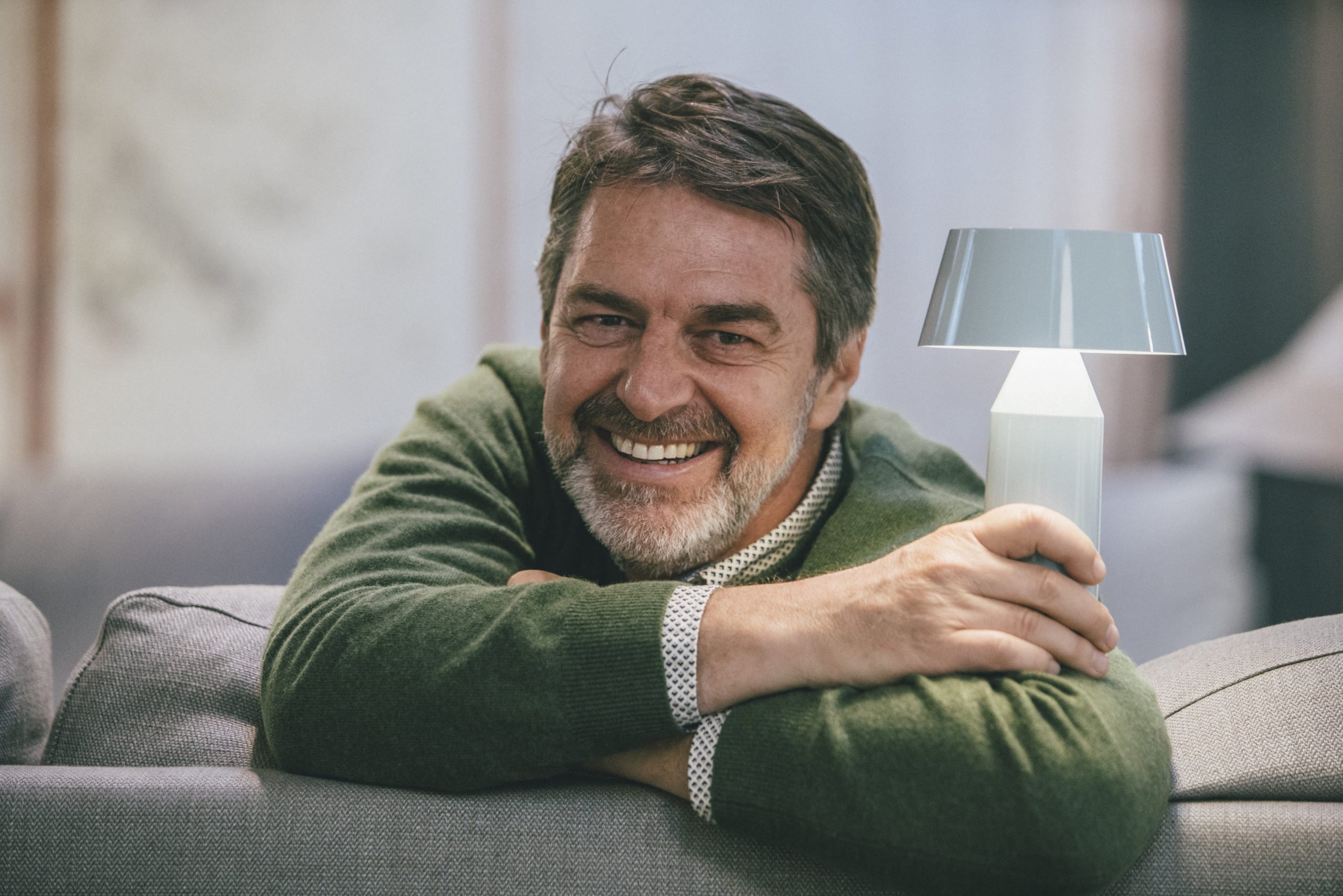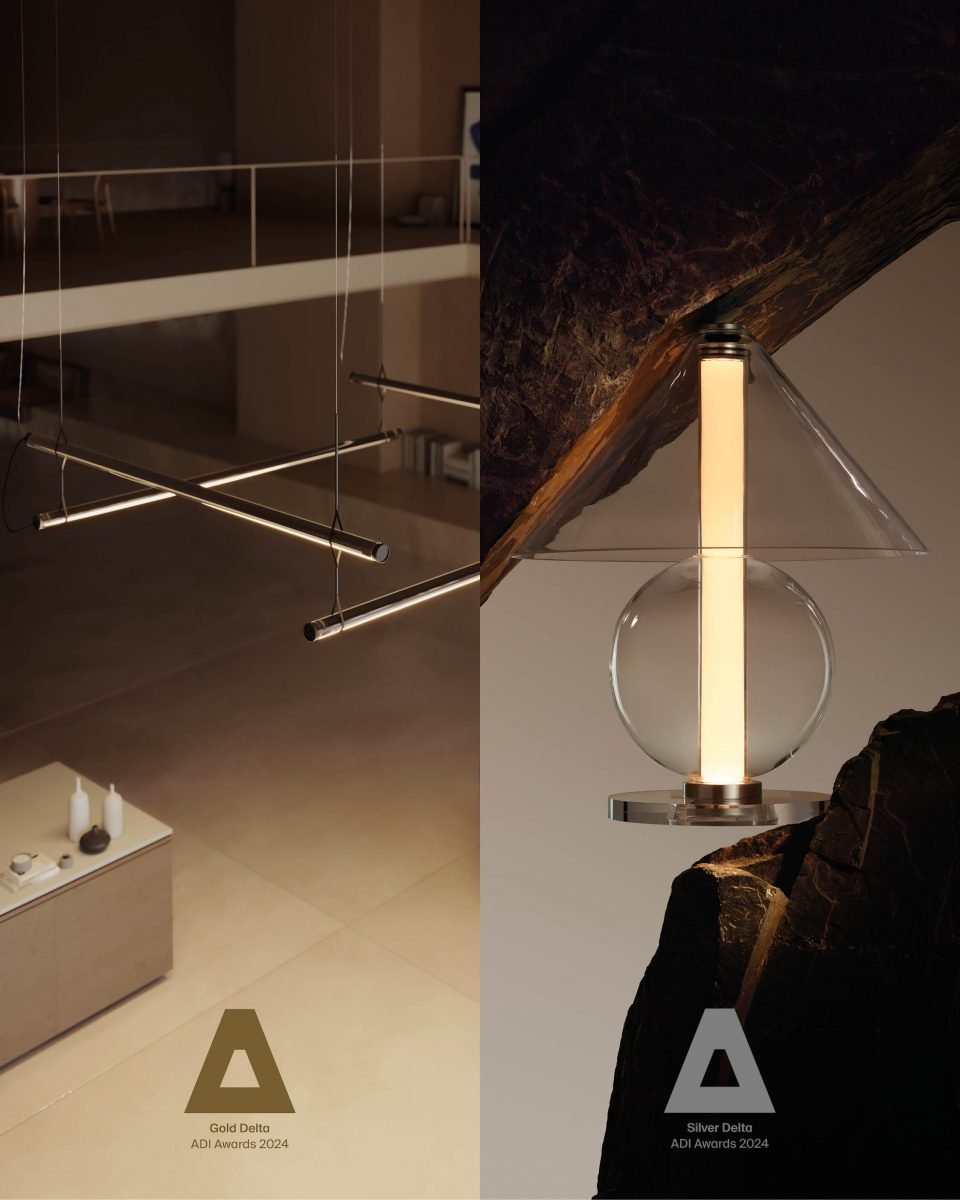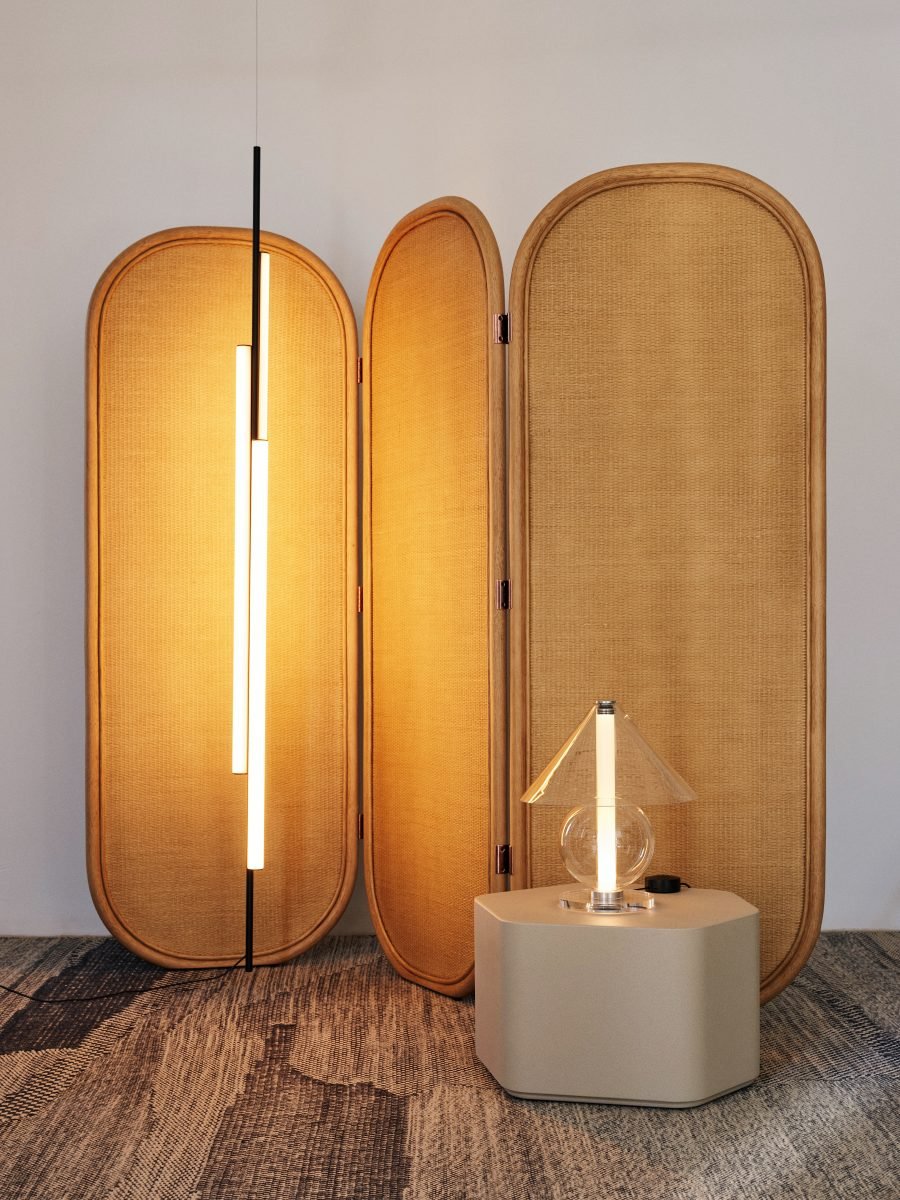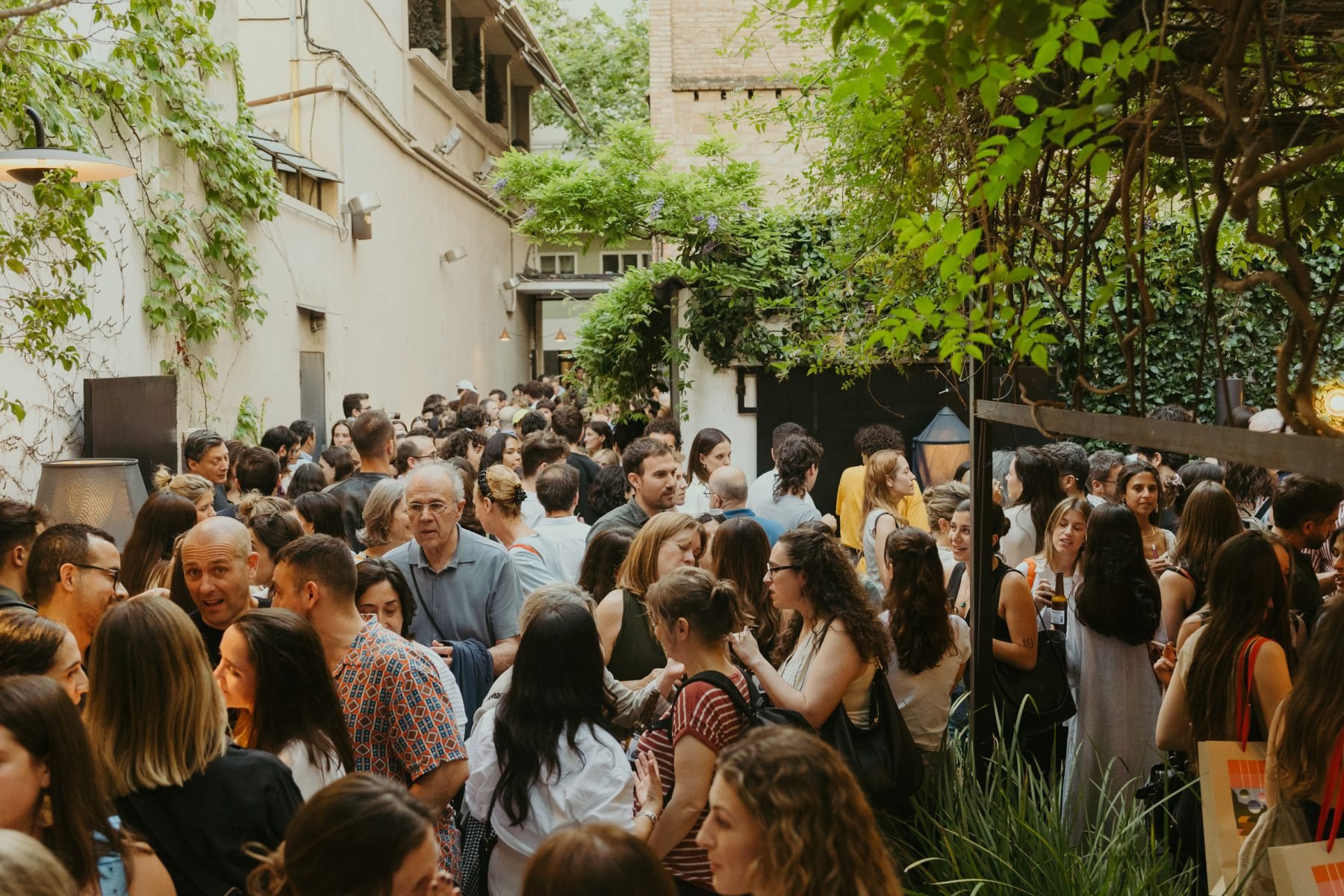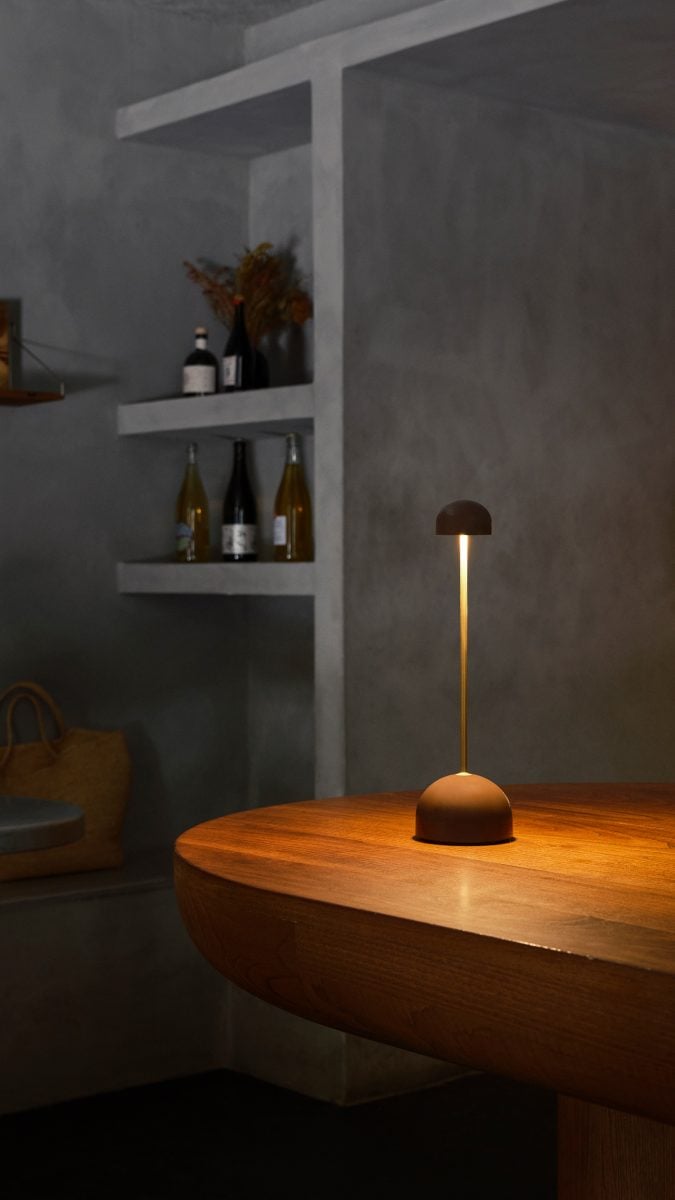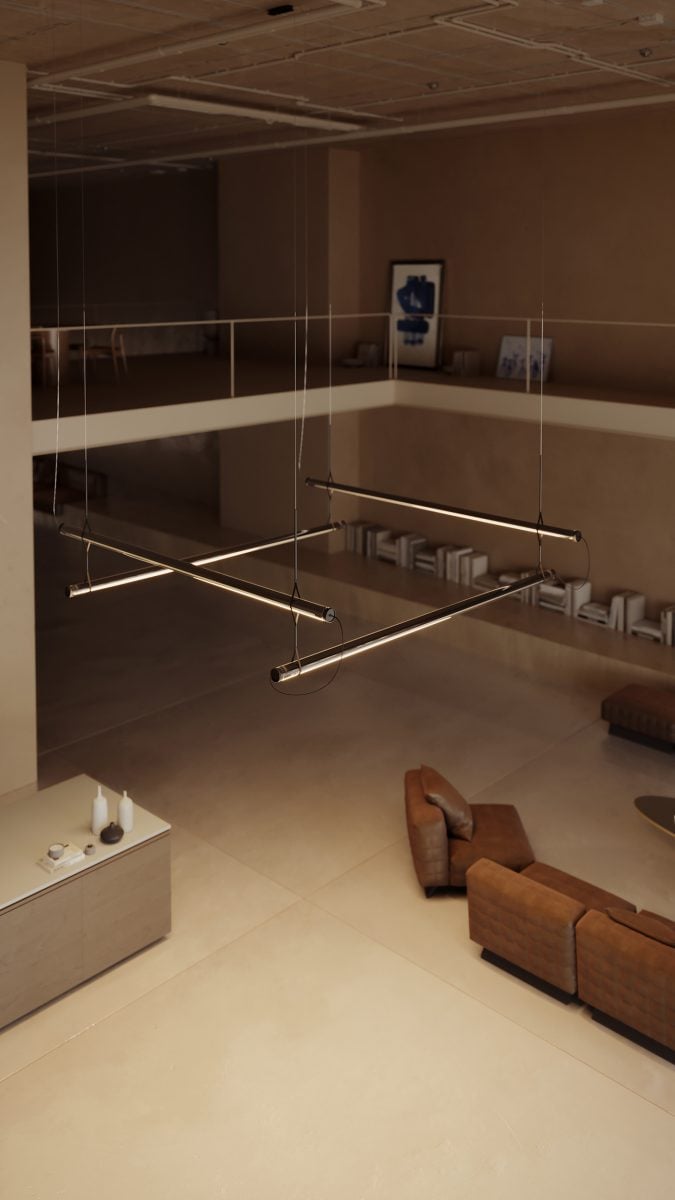Designing to captivate: 10 questions with Christophe Mathieu
Christophe Mathieu is one of Marset’s longest-serving designers. His successful lamps include the Discocó, which is now also available in wood, the Bicoca, the N. Ocho and the Piola. According to him, the quality of the light determines whether a lamp will last over time, and he conceives the lamp as an object with which one lives with, so it must communicate itself. We talked to him about his creative process, about what lies behind his lamps, and about how the design of objects must avoid the anodyne.
When designing a lamp, how do you start your creative process?
When something works well, the most logical thing to do is to try to repeat it. But I try to change the way I start my projects, so that I don’t close myself off to just one way of doing things. What works for me is to work every day. I’m inspired by the things I see on a daily basis, but if I don’t sit at the table, things don’t come out. So I like to sit at my desk and draw. I draw in pencil, in fact I have a table full of pencils, also colours, rulers… all quite traditional. I sit down, draw some lines, and then I make mock-ups.
I make a wish list, “what do I want this lamp to have?”, like a briefing. And for commissions, I like to talk a lot with the client, I think that’s very important. I also try to read a lot, especially biographies and interviews with designers who inspire me.
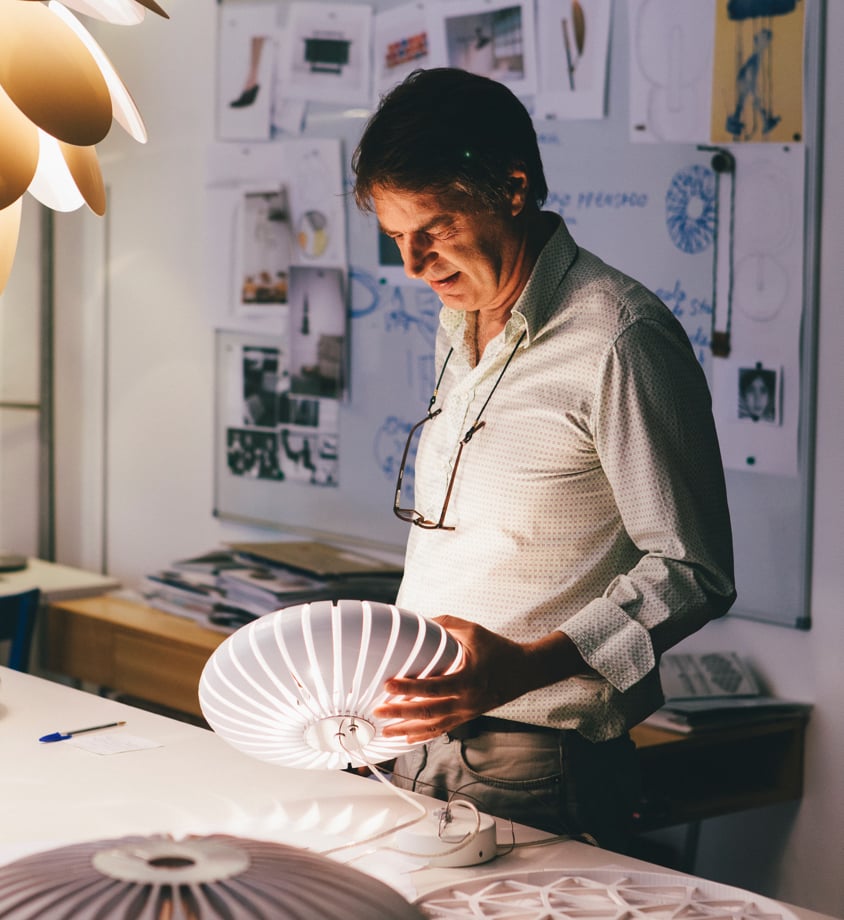
Who inspires you?
Vico Magistretti, Carlo Scarpa, the Castiglioni brothers, Konstantin Grcic, Jasper Morrison.
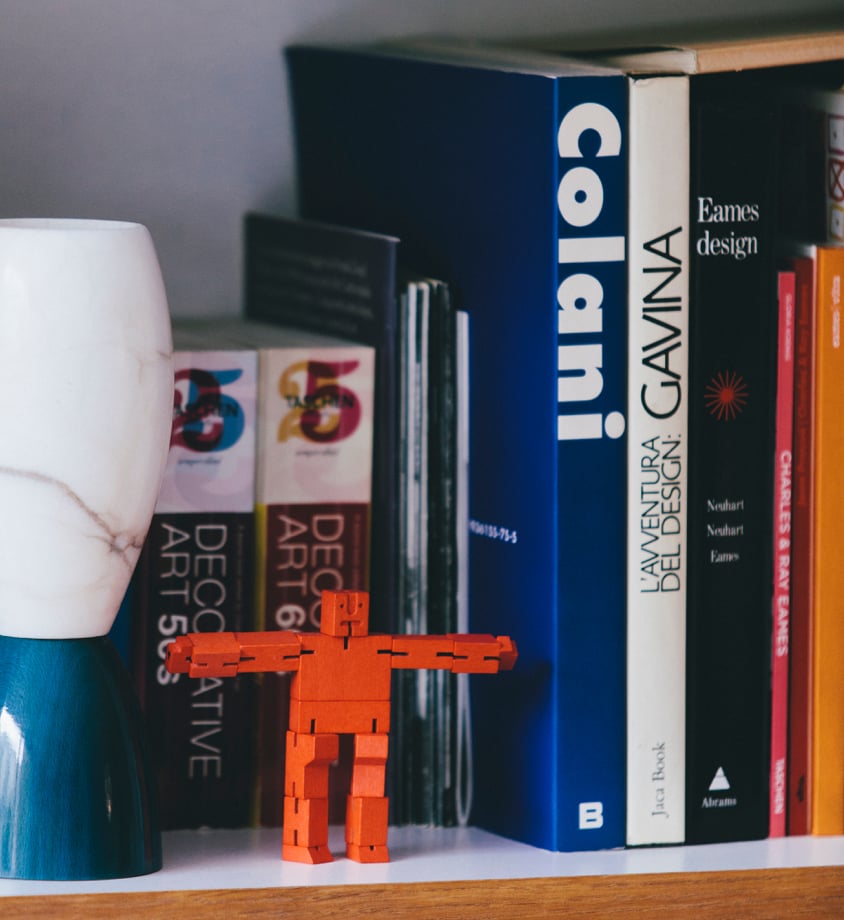
The Discocó, one of your most successful lamps, has been on the market for a long time. How do you see it after all this time?
The Discocó is a very dear lamp to me, I’m very fond of it, and in fact I have it hanging at home, above the table where we eat every day. I often wonder why it still works so well, and I think it has several key characteristics: it gives a very good light –direct downwards, reflected and indirect– and it has an important play of light, because each disc acts as a reflector, so it’s not a boring lamp. The object itself is striking: you may or may not like it aesthetically, but it is not indifferent, it is a light and playful lamp. And, of course, it is very well made: Marset did an excellent development, the technical solutions are very simple and it is very easy to assemble.
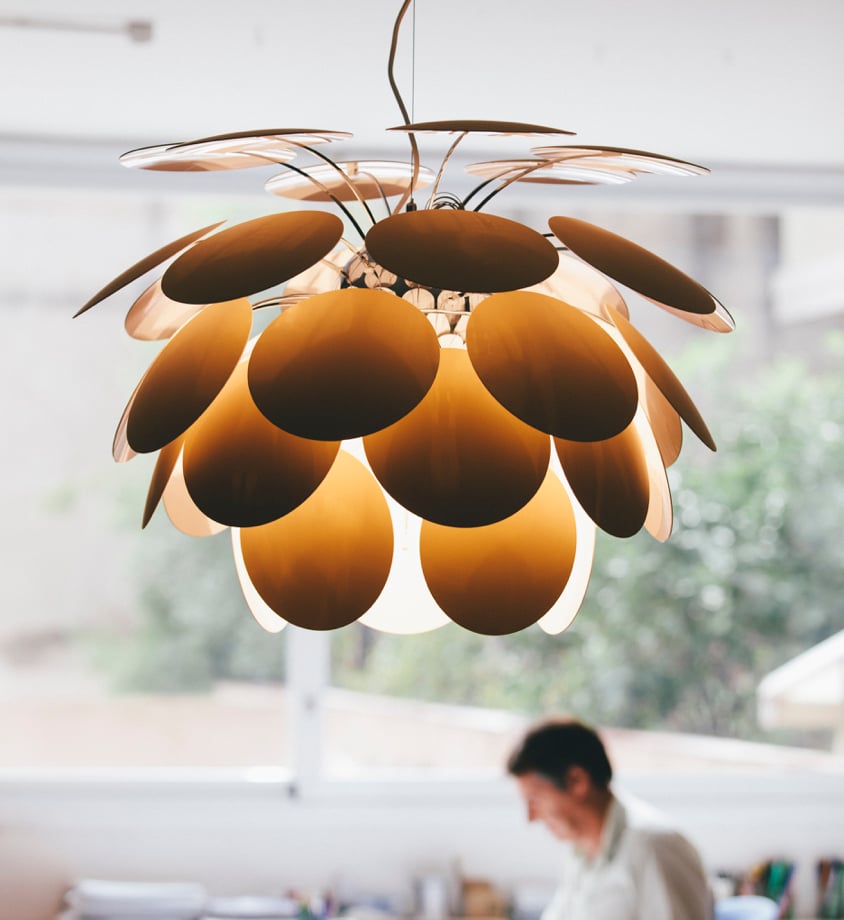
What about the Bicoca?
I don’t like boring things. And something I’ve realised over the last few years is that I like to make things that everyone can understand: I don’t want to mark a distance between the designer and the public. I’m not interested in making products for intellectuals, but that doesn’t mean that you make vulgar things. There was a time when it seemed that being ‘commercial’ was a pejorative, but I don’t think so, I think that a commercial product is one that is liked by a lot of people precisely because it is well made and well thought out.
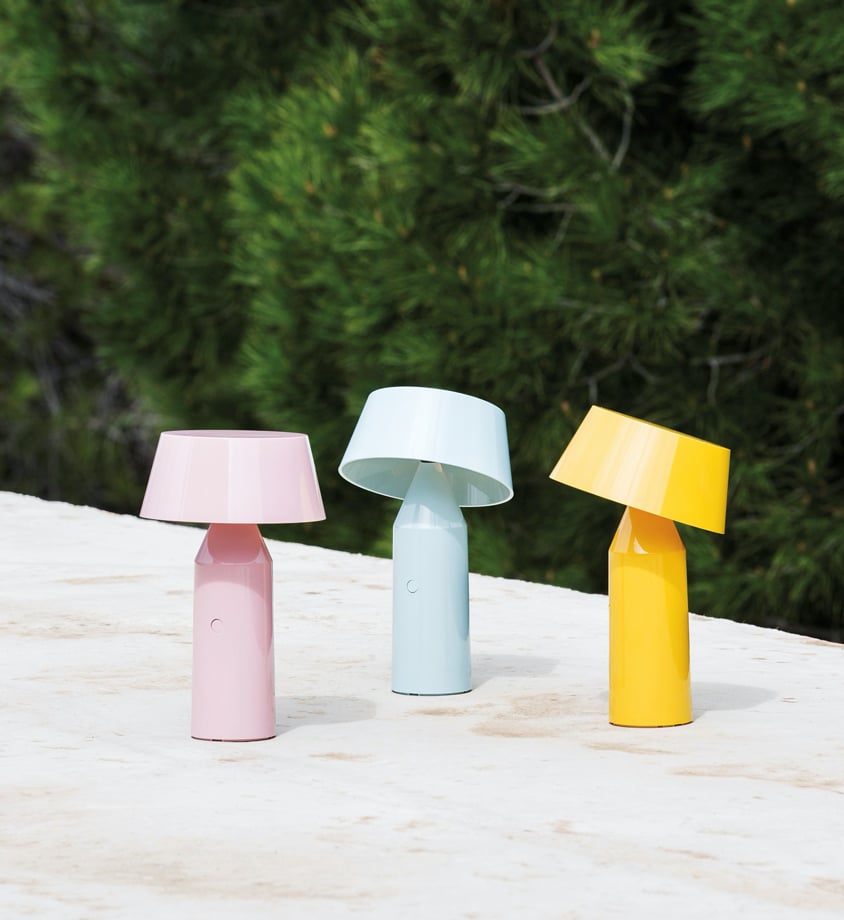
There are hundreds of reading lamps. What do you contribute with N. Ocho?
N. Ocho was a commission. I was asked to have a flexible tube, and there are a lot of lamps like that on the market, and very cheap ones. So I was very clear that whatever I was going to do, it had to be different from everything else. Normally these lamps have a very small bulb and as a result the whole lamp tends to be minimised, the head is made as small as possible. I said: “I’m not going to play that game”, I wanted to make something decorative and that was not ashamed of being seen.
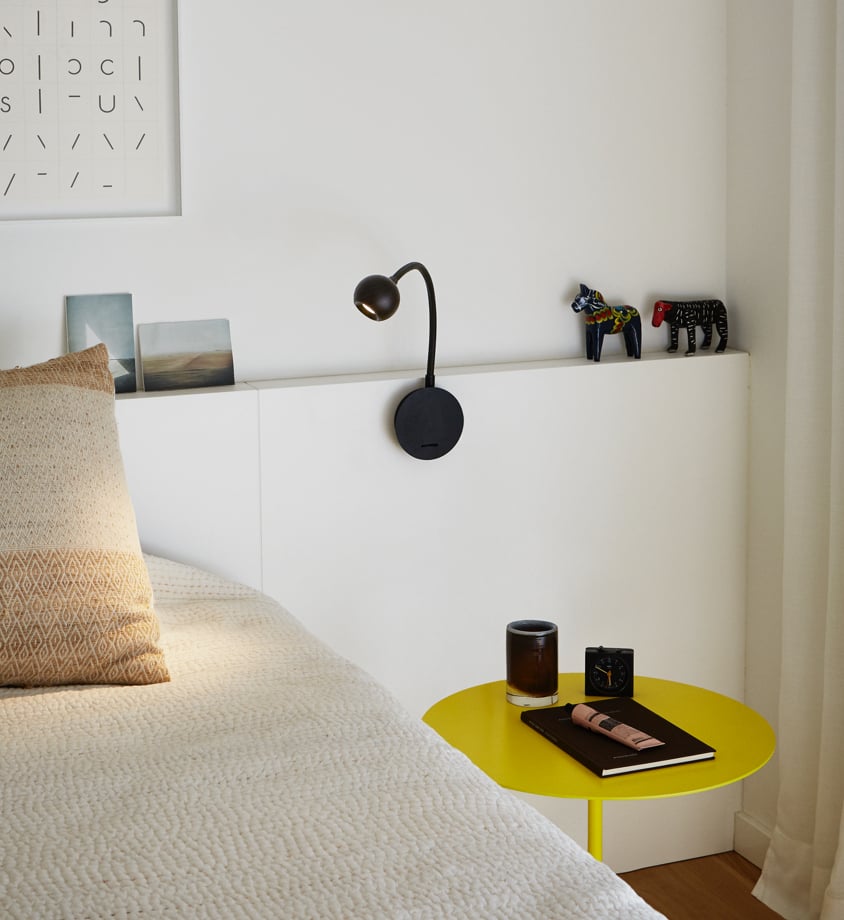
And wood is not so common in this type of lamp. What can you tell us about it?
No, there are no wooden ones. But the qualities that wood has, the smell, the feel… gave me the idea of applying it to the sphere. And this type of lamp tends to be touched quite a lot, because you have to adjust it to what suits you at any given moment. Instead of moving it around with the tube, I thought that moving it around with the lampshade, which involved holding a wooden ball in your hands, could be quite sensual.
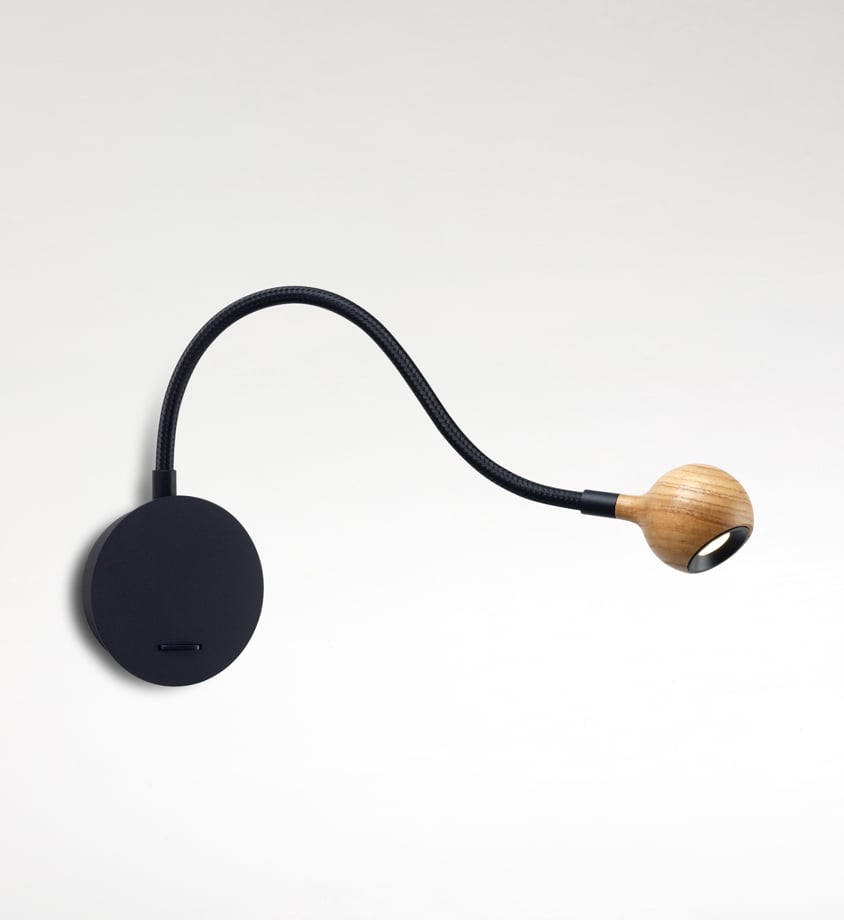
La Piola has a lot of movement, it looks as if it could almost dance. Where did this idea come from?
From the very first moment, that’s what I wanted to convey. It’s funny, because many people who have bought it from me are related to the world of music. I was inspired by images such as the ribbons of rhythmic gymnasts, turbans, and also by the Guggenheim Museum in New York. And just like the Discoco, the Piola has an element that shields the light source, in this case the spiral ribbon, which creates spaces, like steps, where the light comes out, and where it is reflected.
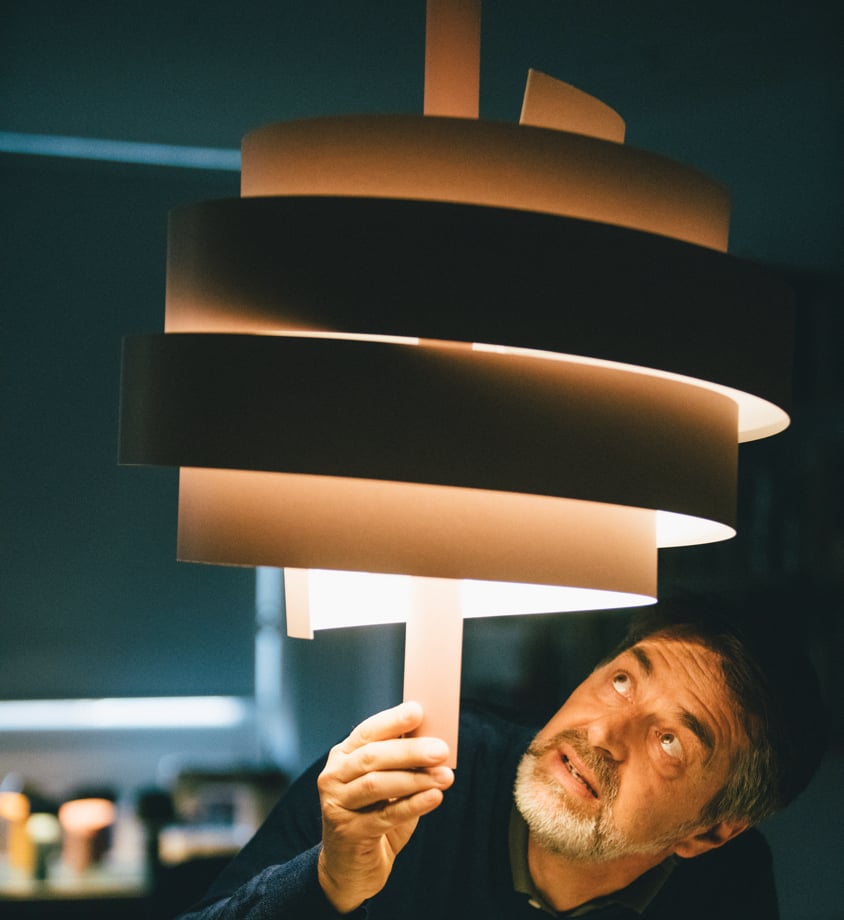
You said before that you don’t like boring things. What do you mean by this?
Over the years it has become clearer and clearer to me: I don’t think we came into this life to be bored. So, dull objects don’t interest me. I don’t like grey houses, where everything is straight and serious… and sometimes it seems that if you want something to last, it has to be serious, you know? And I don’t agree. I give colour a great importance, for example. I’ve been fighting for it for years, because I think it has a huge influence on people’s emotions and emotional state. I like the objects I live with to brighten up my life. Now I’m reading a book about colour, I don’t have a favourite colour, by Hella Jongerius, who is responsible for colour at Vitra, a genius. I’m having a great time.
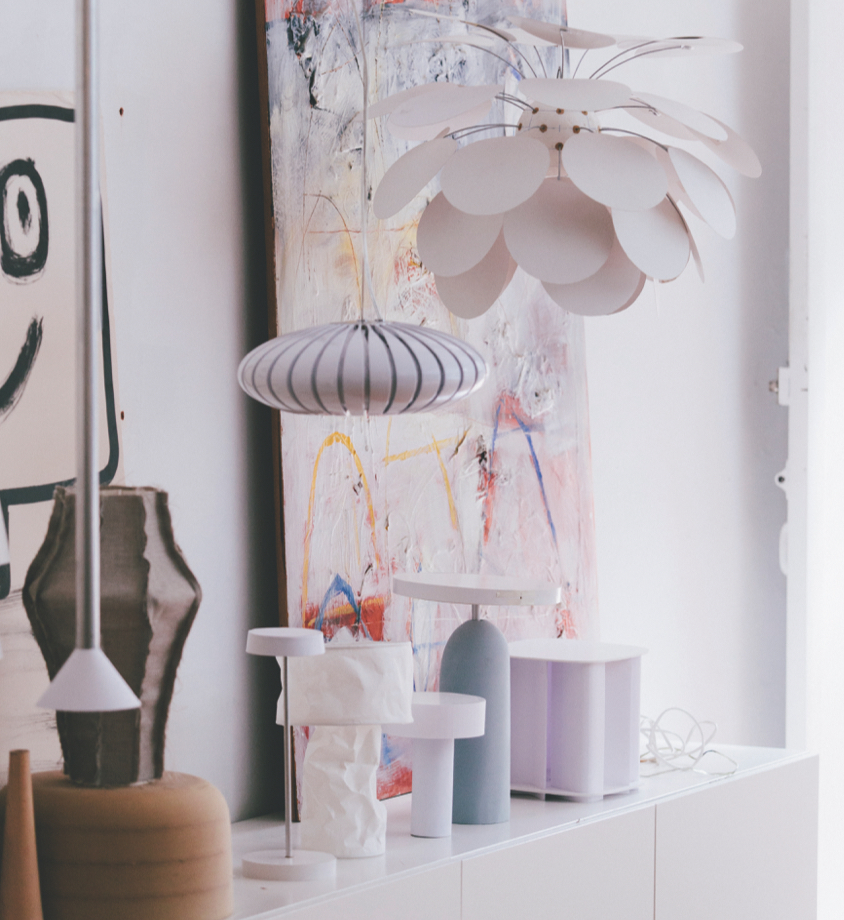
What do you see when you see a lamp designed by you?
It depends. Sometimes you regret that some things come on the market, and there’s nothing wrong about that. Other times, you see designs and you do feel happy, but then you see things that could have been done better. There are many people involved in the outcome of a product –whether it succeeds or it fails– such as those who determine whether the product is going to be made, or those who make up the technical department, without whom I am nobody. That’s what Vico Magistretti used to say. That’s why I like to work closely with the company. And when I see a lamp that I designed years ago and it’s still working, that it’s still pleasing (to me and to others), I’m not going to fool you: it gives me great satisfaction.
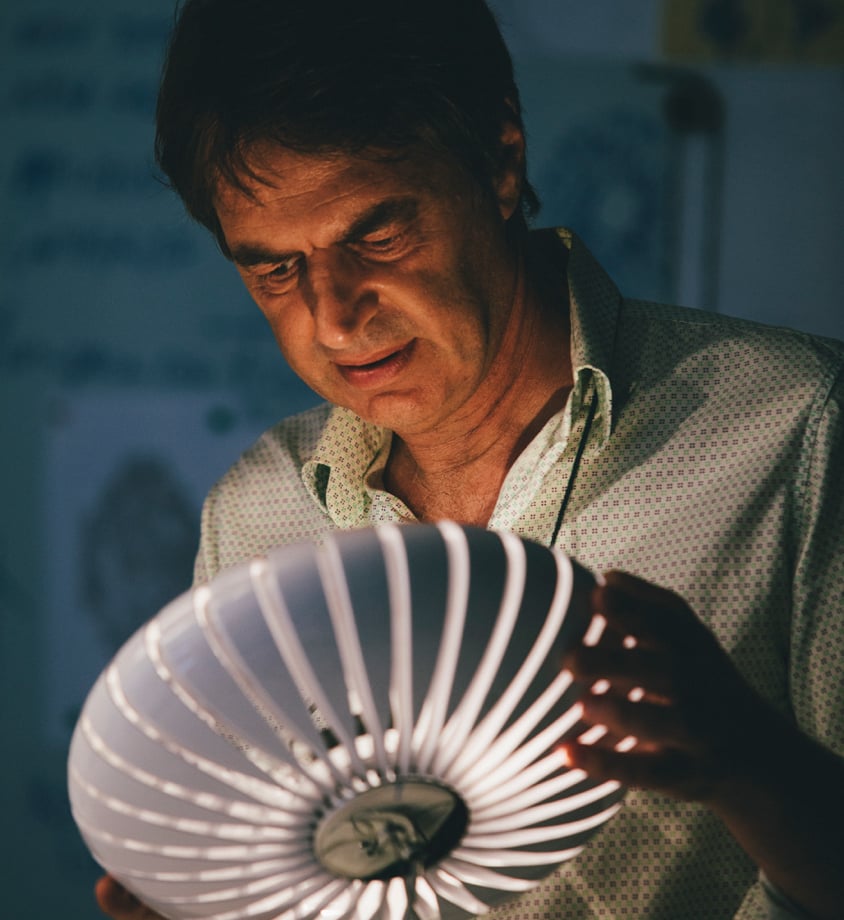
What’s your career at Marset been like?
It’s been many, many years. I see it as having grown up together. When I first knew Marset, it was very different from what it is today, and I feel that in a way it has become what I dreamed of. I had an idea of what I wanted to become within Marset, and it’s funny and nice because it’s happened that way. I feel very identified with Marset now.
